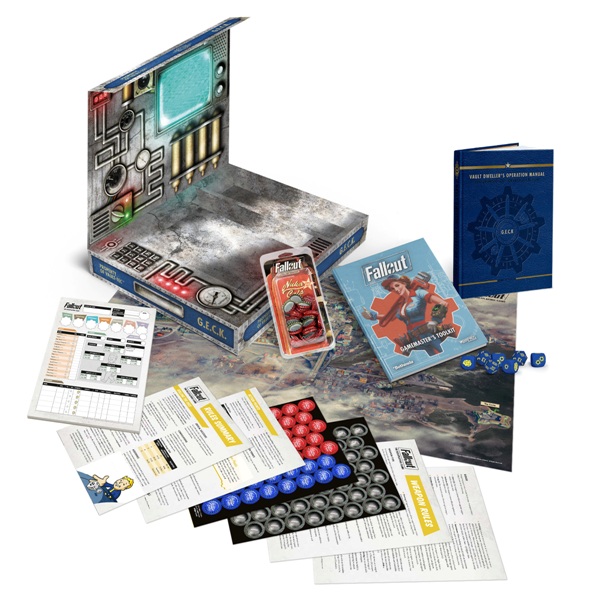Improvised Design…?
By The Warden

Oh, jealousy. Such a vicious and biting emotion. Some consider it a sin, that’s how vile it can be. I think of it as an ulcer; left untreated, it will eat at your insides and scar you for the rest of your life.
What’s been causing this jealousy has been racing past the corner of my eye for the past two weeks. A Twitter feed full of game designers and publishers I respect scrolls along on my second screen, next to the proper feeds I’m supposed to observe and monitor. Under previous circumstances, this would have been a welcome distraction, but game design had to sit on the bench for a couple of weeks while I adapted to my new job. Seeing as these ideas and enthusiasm, as well as the frustrated and uncertainty, race past my subconscious attention and made me wish I had just a little time to work on any of my ongoing projects. Hence the jealousy.
Common sense would say I could just remove the feed and not have to think about it, but losing my contact with the community – no matter how strong or weak it may be at any point and time – is simply not an option. This community is a part of my soul now, maybe even my master. And the master commands my devotion be all-consuming. So I end up watching these tweets pass by and I become jealous.
Time is the enemy of games, it seems. There’s never enough time to play them and there’s never enough time to design everything. Maybe it’s the withdrawal talking, but I’m having what I call a “raw craving.” These are spontaneous moments of creativity where I just want to cut out every middle step of the design process and go straight to play. Regular readers of this column will know I’m a huge fan of improv and that’s exactly where that comes from, something that’s transferred over in many of my creative exercises. I prefer to direct a video without a script; it’s what we did with my last Kickstarter video and I was very happy with the results. Some of my greatest moments on stage were improvised magic, that perfect fraction of life where everyone connects – the actors and the audience – to gain maximum laughs. I want that feeling with game design.
The question is how. Skipping all the essential parts of game design – particularly mechanics, probability, and terminology – can easily blow up in your face. There has to be a basis to start and like all forms of improv, there has to be a connection. Shortcuts, if you will, allowing you to skip over the unnecessary and get straight to the meat. On the stage, it’s typically assigned from audience members or a host/judge. “You are the elderly shopkeep trying to close up for the night because you’re actually an international spy.” That kind of thing. In this case, improvised game design starts with an existing system and runs from there.
What I want to write about today is a kind of a mental checklist to myself on how I would run an improvised design session. Some of it is based on limited experience in running these sessions (I’ve only done it three times before) and a history of stage improv from high school. Like all improv, everyone has their own techniques and needs to make it happen.
A SHAKY START
I’ve improvised a game’s design before. The last one ended up becoming the Optional System, but at this point was pulled out of my butt while a very patient playtester understood the story and events would shift and bend time to account for any hiccups in the game. To describe it bluntly, the PC had an uncanny ability to rise from the dead and carry on as if nothing happened, yet somehow stronger than before. That session was built with very little foundation and was a very rocky ride, but it did provide some crucial suggestions for the development of the final system. That being said, I wouldn’t want to go into a game that raw again.
For now, I’m planning on taking the Optional System and running off in a new direction with it using ideas I’ve worked out from rough drafts… in my head. By the same token, there’s nothing to stop me from another system as my starting point: Fate, Savage Worlds, and Gumshoe are just the tip of the iceberg for options. Any existing system provides stability as you take a jackhammer to its foundation; you can always return to the original design if your alteration backfires for one reason or another. They also provide a baseline of expectations and results. You know what the existing version of the system can do and how challenging or difficult it is for players. If the PCs are cutting their way through all enemies without a scratch or gasp for air, you know your changes are too much and can quickly dial it back. If you are leaving behind corpses of the players best efforts, then it’s time to ease back. However it turns out, you can avoid the bumpy road and reset the game to an even path.
MARKING YOUR TERRITORY
In a burst of raw creativity, everyone has to be on the same page. What are you trying to accomplish? What is the tone? Are you aiming for bloody mayhem or comic relief? Is there room for player contributions or are they limited to select abilities and options? Returning to the stage, all the players have to know if they are going for a serious, dramatic moment or hilarious laughter. (Most stage improv is 99.9% comedy, so this is yet another shortcut.) Your playtesters need the same information so they can help adapt and work within the immediate needs for the current session.
As it is with a conventional playtesting session, players needs to work within the confines you have established for them. How specific those confines are will depend on your immediate concerns for testing out that idea running around in your head. For mine, it’s about testing out a smaller dice pool mechanic to create a faster paced version of the previous system. I need players to roll dice and frequently to ensure the success rate is on par with its predecessor and I want assurance the hero damage rate is manageable. That means I want combat and lots of it. No talking your way out of a situation, they need to pull the trigger and blow its head off.
That doesn’t mean the players are completely restricted. Those crafty brains have a part to play in improvised game design: they have to bend it and potentially try and break it within those confines. This is where improvised playtests should vary from others, in my opinion, because you need to establish any weak points in your original ideas as quickly as possible. These are the bits and pieces you would normally eliminate during the writing process as you run scenarios and calculations in your head to check your work. By encouraging the players to maximize their creativity, you’re replicating that very process.
ONE WILD AND CRAZY GAME!
One last recommendation for these kinds of games: embrace the chaos. Admit to yourself and everyone else at the table that things are going to get a little crazy at times, so why not enjoy the zaniness, eh? These sessions are excellent opportunities for outlandish one shots where the players are rotting zombies assaulting the nearby logging village in search of the girl who read the passage from the Book of the Dead. Maybe that gunfight between kung-fu masters simply ignores the little details, such as the fact that getting shot six times in the chest should kill an ordinary person. So what? Shoot back and let the bullets fly. As long as everyone’s having fun with the chaos while tweaking gameplay to ensure as fair and balanced a game as possible; it’s like drafting up a crude idea on an index card and running a simulation on a super computer.
Embrace the calamity and go with the flow. Improvising a game’s rough design requires all of the same skills needed to GM a game. Instead of reacting to player decisions through story, you’re using the mechanics instead. Ride the wave and prepare to fall in the drink. And I can’t wait to give it a try.


